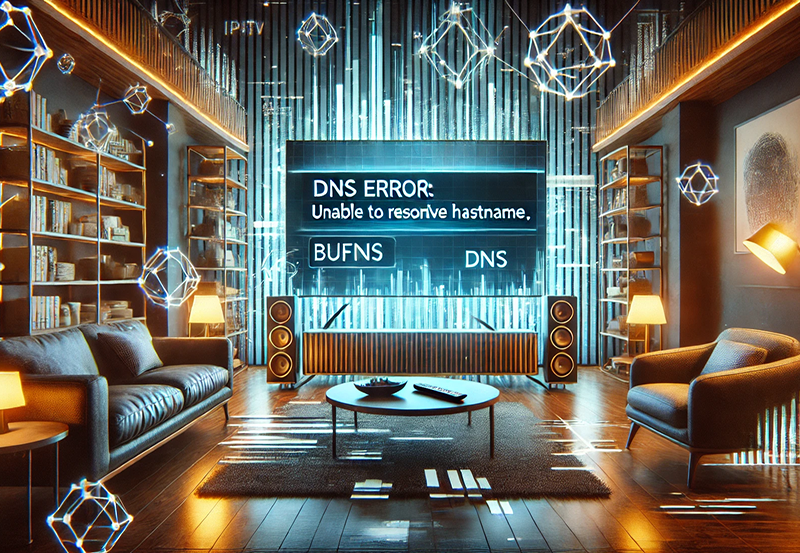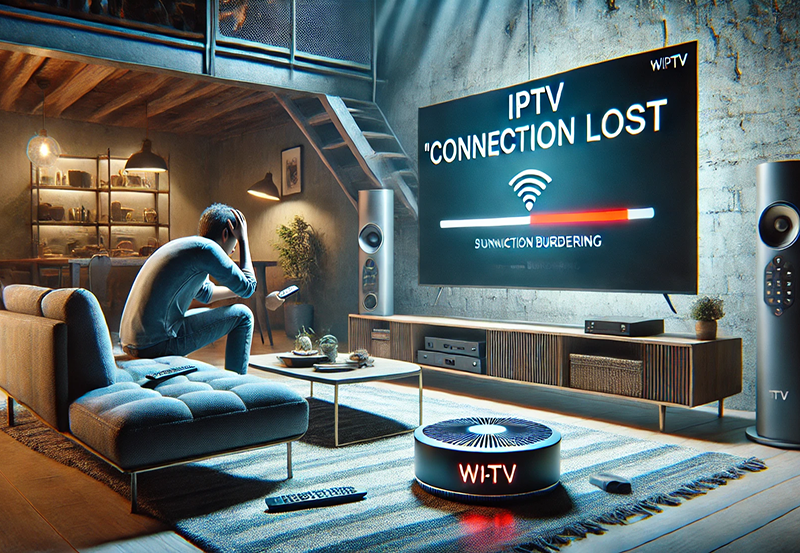Imagine sitting down to enjoy your favorite IPTV service, only to discover that the ports are blocked. The frustration is real—most especially when you miss a crucial moment on the best IPTV channels that you swear by. If you’ve found yourself facing this dilemma, then this guide will shine a light on a practical solution. We’ll take you through the process of reopening blocked IPTV ports, allowing you to discover superior IPTV viewing once again. Dive in to uncover the mystery behind IPTVs and how to get them up and running smoothly.
Understanding IPTV and the Importance of Open Ports
Internet Protocol Television, or IPTV, is a groundbreaking technology that allows you to stream television content over the internet, rather than through traditional satellite or cable formats. This offers the flexibility to watch content when you want to, with the potential for a more affordable IPTV experience.
However, for IPTV to function optimally, it relies on open ports to receive the data packets that deliver your chosen content. A port is like a dedicated channel within your network that facilitates this data exchange. Without open ports, your IPTV services can experience disruptions, ultimately affecting the richness of content from your chosen providers.
Pro Insight:
Stream seamlessly across devices with IPTV service in Canada, offering unmatched stability and content variety.
How Ports Affect IPTV Connectivity
Ports work in the same way mail slots do—the packets of data, much like letters, need to find their designated slots to ensure they reach the correct destination. When these ports are blocked, it’s akin to sealing off the mail slot, leaving the letters, or in this case, data packets, undelivered.
This blockage can prevent you from accessing the wide array of channels offered by your IPTV provider. The impact is straightforward: without open ports, even the best IPTV channels won’t be available for viewing. This makes understanding how to manage ports crucial for seamless IPTV streaming.
Common Reasons Ports Get Blocked
- Firewall settings that default to a more secure configuration.
- Software updates that reset port settings.
- Internet Service Provider (ISP) restrictions.
Check Before You Proceed: Is the Port Really Blocked?
Before jumping into troubleshooting, verify if the ports are genuinely blocked. There’s a tendency to blame ports for connectivity issues, when in fact, other factors might be at play. Slow speeds, signal interference, or service outages can mimic blocked port symptoms.
Simple Steps to Verify Port Status
- Access your router’s management interface through its IP address.
- Navigate to the sections labeled “Port Forwarding” or “Network Utilities.”
- Check the status of the ports commonly used by your IPTV service, usually ranging between 8000-8080.
Having confirmed the ports are indeed blocked, it’s time to take appropriate steps to unblock them and restore that superior IPTV viewing experience.
Step-by-Step Guide to Reopening IPTV Ports
With diagnostics out of the way, let’s delve into a comprehensive method to successfully reopen your blocked IPTV ports. This will not only make your system ready to tune into the best IPTV channels available but also ensure a low-lag, high-quality viewing experience.
Accessing the Router Interface
The first step involves logging into your router. Most routers require you to enter a specific IP address into your web browser’s address bar. This IP is often found on a sticker on the router itself.
Once on the login page, input the default credentials—commonly ‘admin’ for both username and password—but these might have been changed for security. If you’re unsure, check your router’s manual or contact your ISP.
Navigating to Port Forwarding Settings
After logging in, navigate to the “Port Forwarding” section. Routers can vary in layout, so if it’s not directly visible, it may be under categories like “Advanced,” “Firewall,” or “Network Settings.”
Port forwarding is essential for dictating which external data packets can access your local network, effectively creating a path for IPTV traffic. Look there to begin making your adjustments.
Configuring Port Settings
In the port forwarding section, select or add a new rule. Here, you’ll need to enter the port numbers that your IPTV service uses. Common ports include 9981 and 9982, but check with your provider for specifics.
- Enter the internal IP address of your device (the one running the IPTV app).
- Input the necessary port range.
- Choose the protocol—often TCP/UDP.
- Save your changes and restart the router.
Important Considerations When Forwarding Ports
Forwarding ports opens paths for internet traffic, so while it restores your IPTV, it can also slightly reduce overall network security. Always ensure you are using security software and monitoring network traffic.
Testing & Troubleshooting Your IPTV Setup
Once reconfiguration is complete, testing is crucial. This ensures the setup is functional and any further issues can be rectified sooner rather than later.
Checking Connectivity and Stream Quality
Once your router is reconfigured, fire up your IPTV application. Explore all segments of your channel list to confirm all streams load without hitches, most especially the higher bandwidth options that typically entail the best IPTV channels.
If you face further issues, revisit your router’s settings. Ensure that the right internal IP addresses and port ranges are configured, and double-check that external services haven’t been restricted by ISP policies.
Common Pitfalls and Solutions
- Issue: Streams buffer excessively.
Solution: Check your internet speed. Lower speeds mean higher chances of buffering; upgrade if necessary. - Issue: Specific channels not loading.
Solution: Adjust the port range; some channels may require different ports beyond standard configurations.
Maintaining Your Setup: Staying Updated with IPTV Providers
With technological advances, staying abreast with the latest configurations and updates from your provider is advisable. Often, these updates can improve user experience or mitigate security risks.
Communicating with Your IPTV Provider
Regularly inform your provider about the issues you face. They could offer insights or updates that might change your port or connection settings for improved service.
Some providers even release regular software updates meant to sync with network changes, ensuring optimal performance and reducing the likelihood of blocked ports.
Reflecting On the Journey and Looking Ahead
Embarking on the journey to reopen blocked IPTV ports equips one with a deeper understanding of not just how IPTV works, but also how one’s network interacts with it. By taking these steps, you foster a more reliable, seamless viewing experience that could very well make your IPTV service more affordable in the long run.
Looking ahead, with technology evolving at an exponential pace, this knowledge could assist you in confidently navigating future advancements. Discover superior IPTV viewing by mastering these foundational elements and continuing to adapt.
Frequently Asked Questions

How do I know if my ports are blocked?
You can use online port checking tools or access your router settings to see if it’s blocking the required ports for your IPTV service.
Which ports should be open for IPTVs?
Mostly, IPTVs function well with ports like 9981 and 9982 open, but this can vary by provider, so it’s best to check with them directly.
Can an ISP block IPTV ports?
Yes, ISPs might block ports they deem harmful or unnecessary; if you suspect this, contact them for clarification or to request an unblocking.
Is port forwarding safe?
While port forwarding aids connectivity, it can lower network security. Utilize firewalls and security software to prevent unauthorized access.
Why are some channels still not working after port forwarding?
If specific channels don’t work, double-check the port numbers for each channel and consider adjustments, as some might require non-standard ports.
Does port forwarding affect internet speed?
Port forwarding should not impact your internet speed. However, heavy usage of opened ports can lead to bandwidth congestion, affecting other devices on the network.
How to Improve IPTV Performance on Weak Wi-Fi





